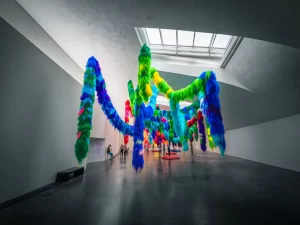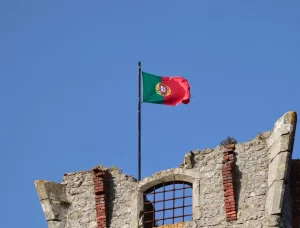The Evolution of Portuguese Fashion Through the Ages
Portugal’s rich and diverse history has intricately woven its influence into the fabric of fashion, shaping styles across centuries. In this exploration, we embark on a captivating journey through the evolution of Portuguese fashion, uncovering the unique blend of cultural heritage and contemporary trends.
Introduction:
Portugal, a country steeped in history and cultural diversity, has witnessed a fascinating evolution of fashion. From ancient roots to modern trends, Portuguese fashion reflects the nation’s journey through different eras, each leaving an indelible mark on the clothing styles of the time.
Part 1: Ancient Roots and Medieval Influences (5th Century – 15th Century):
Roman Influences:
The early centuries saw Portugal influenced by Roman styles, with tunics, togas, and sandals making a mark on clothing. The impact extended to decorative motifs inspired by Roman architecture, enriching the fabric of Portuguese attire.
Medieval Transformations:
As Portugal navigated through the Middle Ages, the clothing landscape evolved. Moorish and Christian cultures left their imprints, giving rise to vibrant colors, intricate embroidery, and layered garments in aristocratic attire. Distinct regional variations added further diversity.
Part 2: Renaissance Refinement and Global Inspirations (16th Century – 18th Century):
The Age of Discovery:
Portugal’s maritime explorations during the Renaissance ushered in new influences and materials. Luxurious fabrics like silk and velvet, along with exotic patterns, transformed fashion, reflecting the wealth and global connections of the era.
French Influence:
In the 17th and 18th centuries, French fashion held sway among the Portuguese aristocracy. Elaborate court dress, ornate accessories, and the emergence of the Rococo style marked this period of evolving tastes and styles.
Part 3: National Identity and Romantic Expressions (19th Century – Early 20th Century):
Reawakening of Portuguese Identity:
The 19th century witnessed a reawakening of Portuguese identity in fashion. Traditional elements like embroidery, lace, and regional motifs found their way into modern designs. A revival of folk costumes influenced high-fashion trends.
Romanticism and Realism:
Romantic and realistic ideals left their mark on Portuguese fashion. Natural colors, flowing silhouettes, and an emphasis on individuality became prominent. Designers like João Félix and Madame do Vale blended Parisian trends with a local touch.
Part 4: Modernity and Globalization (Mid-20th Century – Present):
Post-War Innovation:
The post-war era witnessed the rise of ready-to-wear clothing and the influence of international designers in Portugal. Fashion houses like Lanidor and Fátima Lopes gained recognition for their unique designs and craftsmanship.
Global Recognition and Contemporary Trends:
Recent decades saw Portuguese fashion gaining international acclaim. Designers like Felipe Oliveira Baptista and Luís Buchinho achieved global fame, contributing to the diverse and sustainable landscape of contemporary Portuguese fashion.
Conclusion:
The journey of Portuguese fashion is a testament to the country’s resilience, creativity, and adaptability. From ancient influences to modern trends, the fashion landscape reflects a vibrant national identity. Let us appreciate the artistry of Portuguese designers who continue to shape the global fashion scene.
Key Takeaways:
- Ancient Roots and Medieval Influences – Roman-inspired tunics, vibrant colors in medieval aristocratic attire
- Renaissance Refinement and Globalization – Luxurious fabrics, exotic patterns, French Rococo influence
- National Identity and Romantic Expressions – Incorporation of traditional elements, revival of folk costumes
- Modernity and Globalization – Rise of ready-to-wear, international influences, focus on sustainability
FAQs:
Q: How has Portuguese fashion evolved in response to global trends in recent years?
A: Recent decades have seen Portuguese fashion embracing global trends with a focus on diversity, sustainability, and innovative materials. Designers like Felipe Oliveira Baptista and Luís Buchinho have played pivotal roles in shaping contemporary styles.
Q: Are there museums dedicated to the history of Portuguese fashion?
A: Yes, there are museums in Portugal that showcase the history and evolution of Portuguese fashion. The Museu Nacional do Traje e da Moda in Lisbon is one such institution offering insights into the country’s sartorial journey.
Q: Can I explore contemporary Portuguese fashion events and designers?
A: Absolutely! Portugal hosts various fashion events, and many designers participate in international fashion weeks. Websites like Portugal Fashion provide information on upcoming events, and global platforms feature collections from renowned Portuguese designers.



